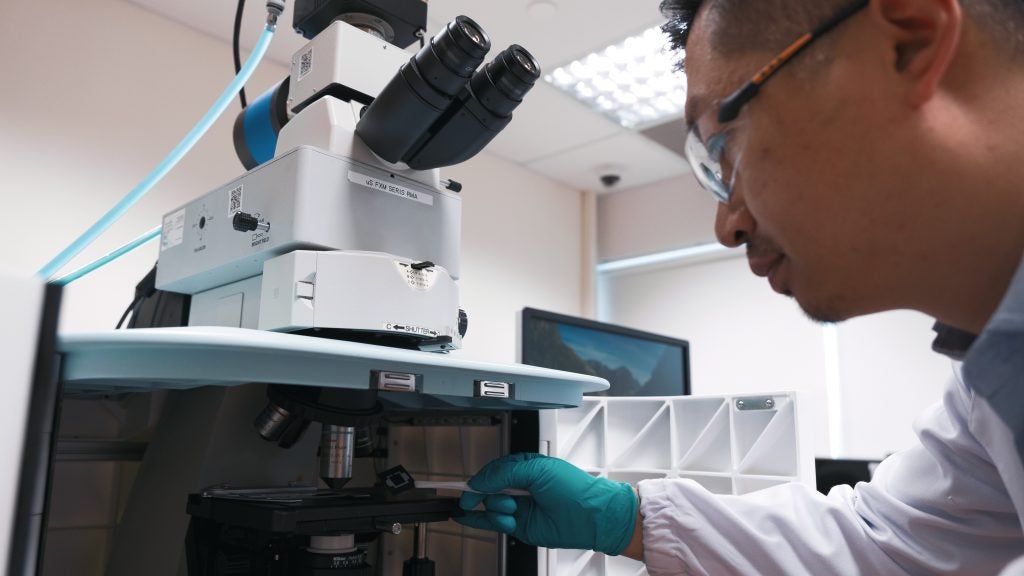
What if you could feel raindrops or a beating heart, or train in competitive archery, all from the comfort of your home? That game-changing immersiveness could bring a new dimension to virtual environments, allowing users to experience the world of imagination with a high degree of realism.
A recent invention by a research team led by Professor Lim Chwee Teck (Dept of Biomedical Engineering and Director of the Institute for Health Innovation & Technology, iHealthtech) promises to substantially enhance a user's sense of touch in virtual reality (VR), with the aim of delivering a more authentic and immersive experience within the metaverse.
Their new invention - called HaptGlove - is an untethered and lightweight haptic glove that provides users with both skin-like and movement sensations when interacting with a virtual object.
While the concept of haptic gloves is not new, current technologies are not able to give users a realistic sense of touch. For example, typical haptic glove designs in the market use vibration motors, which could not accurately replicate the real-world sense of touch such as simulating the hardness and shape of a VR object. Other haptic gloves use pneumatic actuators, which are devices that generate a sense of pressure, but their bulky designs greatly limit the user's movement.
"My experience with VR and the metaverse has always been unsatisfactory" said Prof Lim. "VR should not be just about a visual and auditory experience; it should present the ability to interact with VR objects. However, current methods of pressing on a virtual panel or interacting with another avatar lack the sensation of touch that we experience in the real world. This prompted me to work with my team to develop a haptic glove to enable 'physical' touch in the virtual world."
HaptGlove is designed to be a portable and highly flexible haptic glove that enables users to have immersive touch and feel of VR objects with unparalleled realism. The device incorporates lightweight pneumatic control with the team's microfluidic sensing technology to reduce its size and weight significantly and does not require bulky accessories.
"The HaptGlove's unique design allows users to interact with the virtual world more naturally and realistically, which would give users unobtrusive recreational or competitive sensation in VR," said Prof Lim.

HaptGlove contains five pairs of haptic feedback modules, one for each finger. The modules are controlled wirelessly to sense the VR object in terms of shape, size and stiffness.
Putting on the HaptGlove, the user can sense contact when the avatar's hand touches, grasps and manipulates a VR object. This is achieved by using a microfluidic pneumatic indenter to deliver real-time pressure to the user's fingertips. The glove can also simulate the shape and stiffness (soft or hard) of the object that the avatar is touching, by restricting the user's finger positions, adding realism to the virtual interaction.
Using proprietary software developed by the NUS team, HaptGlove achieves a visual-haptic delay of less than 20 milliseconds - this is faster than conventional haptic gloves, delivering a near-real-time user experience.
The latest prototype is also more comfortable for users to wear at only 250 grams, much lighter than commercially-available haptic gloves which weigh over 450 grams.
Prof Lim and his team started working on the HaptGlove in 2019 and took two years to develop a prototype. To test the performance of the HaptGlove, the team recruited 20 users who wore the glove to sort four balls of different stiffnesses in the virtual world. Besides achieving over 90% accuracy in completing the tasks, the users noted that the HaptGlove had significantly enhanced realism in VR and improved their overall experience, compared to devices using vibration motors.
Besides gaming, the HaptGlove has useful applications in the fields of medicine and education, such as assisting surgeons to better prepare for an operation by simulating a hyper-realistic environment.
For their invention, the NUS team has been awarded the IES Prestigious Engineering Achievement Awards 2022 by The Institution of Engineers, Singapore. They have also filed a patent for their design and hope to commercialise the product within two years through NUS spin-off Microtube Technologies, which develops sensing technologies for applications in gaming and the metaverse.
The team is aiming for HaptGlove to retail for half the price of commercially-available haptic gloves, which currently cost between S$5,000 to S$20,000.





